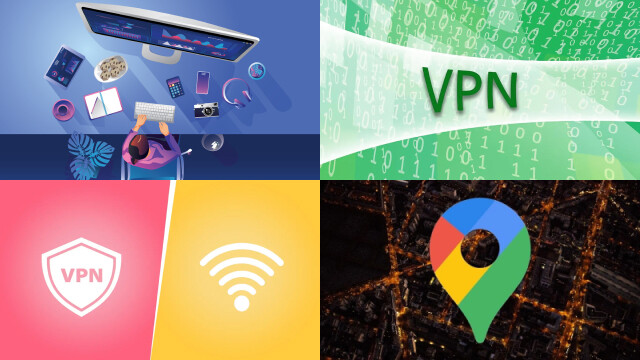Introduction: Why Create Your Own VPN?
Virtual Private Networks (VPNs) have become increasingly popular as individuals seek to protect their online privacy and security. A VPN allows users to encrypt their internet connection, making it more difficult for third parties to monitor their online activity and steal personal information.
While many VPN providers offer reliable and secure services, creating your own VPN has its own benefits. By creating your own VPN, you have complete control over your online activity and the data that is transmitted. This means that you can ensure that your data is not being stored or shared with third parties.
Additionally, creating your own VPN can save you money in the long run, as you won’t have to pay for a monthly subscription to a VPN provider. With a little bit of technical know-how, you can easily set up your own VPN and enjoy the benefits of online privacy and security without relying on a third-party provider.
In this article, we will explore the basics of VPN technology and provide a step-by-step guide to creating your own VPN.
Understanding the Basics of VPN Technology
A Virtual Private Network (VPN) is a technology that allows users to create a secure and encrypted connection between their device and the internet. When using a VPN, all data that is transmitted between the user’s device and the internet is encrypted, making it more difficult for third parties to intercept and access the user’s online activity.
VPNs use various security protocols, such as OpenVPN, IPSec, and L2TP/IPSec, to ensure that data is transmitted securely. These protocols create a “tunnel” between the user’s device and the VPN server, encrypting all data that is transmitted through this tunnel.
One of the primary benefits of using a VPN is that it allows users to hide their IP address, making it more difficult for third parties to track their online activity and identify their location. Additionally, VPNs can be used to bypass geographic restrictions and access content that may be blocked in certain regions.
By understanding the basics of VPN technology, users can make informed decisions when selecting a VPN provider or creating their own VPN. With a solid understanding of VPN technology, users can ensure that their online activity is kept private and secure.
Step-by-Step Guide to Creating Your Own VPN
Creating your own VPN may seem daunting, but with the right tools and resources, it can be a relatively straightforward process. Here is a step-by-step guide to creating your own VPN:
- Select a server: The first step is to select a server to host your VPN. You can use a cloud server or set up your own physical server.
- Install operating system and VPN software: Install an operating system and a VPN server software on your selected server.
- Configure security protocols: Configure the security protocols for your VPN, such as OpenVPN or IPSec.
- Set up a firewall: Set up a firewall to protect your VPN and prevent unauthorized access.
- Create user accounts: Create user accounts for those who will be using your VPN.
- Configure client software: Configure client software on your devices to connect to your VPN.
- Test your VPN: Test your VPN to ensure that it is functioning correctly.
By following these steps, you can create your own VPN and enjoy the benefits of online privacy and security. It is important to note that creating your own VPN requires technical knowledge and expertise, so it may not be suitable for everyone.
Choosing the Right Server Location for Your VPN
When selecting a server location for your VPN, there are several factors to consider. The server location can affect the speed and performance of your VPN, as well as your ability to access geo-restricted content. Here are some tips for choosing the right server location for your VPN:
- Consider proximity: Choosing a server location that is geographically closer to your physical location can improve the speed and performance of your VPN.
- Consider privacy laws: Different countries have different privacy laws. Choosing a server location in a country with strong privacy laws can help ensure that your online activity is protected.
- Consider geo-restricted content: If you want to access content that is restricted in your region, you should choose a server location in a country where that content is available.
- Consider server availability: Some VPN providers may have limited server locations, so it is important to choose a provider that has servers available in the locations you need.
By considering these factors, you can choose the right server location for your VPN and ensure that your online activity is private and secure.
Configuring Security Protocols for Your VPN
When configuring a VPN, security protocols are an important consideration. VPN security protocols are used to encrypt and protect your online activity, ensuring that your data is secure and private. Here are some common security protocols used in VPNs:
- OpenVPN: OpenVPN is an open-source security protocol that provides strong encryption and is widely considered to be one of the most secure VPN protocols available.
- IPSec: IPSec is a protocol suite that provides secure communication over the internet. It is often used in combination with other security protocols to provide additional layers of security.
- L2TP/IPSec: L2TP/IPSec is a protocol that combines the security features of IPSec with the tunneling capabilities of L2TP. It provides strong encryption and is often used in business environments.
- PPTP: PPTP is an older protocol that is less secure than newer protocols like OpenVPN and IPSec. It is still widely used, however, due to its ease of setup and compatibility with a wide range of devices.
When configuring security protocols for your VPN, it is important to choose a protocol that provides strong encryption and is compatible with your device and operating system. By choosing the right security protocol, you can ensure that your online activity is secure and private.
Setting Up VPN Client Software on Your Devices
After creating your own VPN, the next step is to set up the VPN client software on your devices. This software allows you to connect to your VPN server and access the internet securely and privately. Here are some steps to follow when setting up VPN client software on your devices:
- Download the client software from your VPN server: After setting up your VPN server, you will need to download the client software from your server’s website.
- Install the client software: Follow the installation instructions to install the client software on your device.
- Configure the client software: Open the client software and enter your VPN server’s address and login credentials. You may also need to choose a security protocol and server location.
- Connect to the VPN server: Once you have configured the client software, click on the connect button to connect to your VPN server.
- Test your connection: To ensure that your VPN is working properly, test your connection by accessing a website and checking your IP address.
By following these steps, you can set up VPN client software on your devices and enjoy secure and private internet access.
Troubleshooting Common Issues with Your VPN
While a VPN can provide you with secure and private internet access, it is not immune to issues and errors. Here are some common issues that you may encounter with your VPN and how to troubleshoot them:
- Connection issues: If you are unable to connect to your VPN server, ensure that your internet connection is stable and that you have entered the correct login credentials and server address. You may also need to check your firewall settings.
- Slow connection speed: If you experience slow connection speeds, try connecting to a different server location or using a different security protocol. You may also need to check your device’s processing power and internet speed.
- DNS leaks: A DNS leak occurs when your device uses your ISP’s DNS instead of your VPN’s DNS, exposing your online activity. To prevent DNS leaks, ensure that your VPN client software has DNS leak protection and that you have configured your device to use your VPN’s DNS.
- IP address leaks: An IP address leak occurs when your real IP address is exposed despite using a VPN. To prevent IP address leaks, ensure that your VPN has a kill switch and that your device is configured to use your VPN for all internet traffic.
By troubleshooting these common issues, you can ensure that your VPN is working properly and providing you with the secure and private internet access you need.
Conclusion: Enjoying the Benefits of Your DIY VPN
In conclusion, creating your own VPN can be a rewarding experience that offers a variety of benefits, including enhanced security and privacy, access to restricted content, and the ability to browse the internet anonymously. By understanding the basics of VPN technology, choosing the right server location, configuring security protocols, and setting up VPN client software on your devices, you can create a reliable and effective VPN system.
However, it’s important to keep in mind that there may be some common issues that you could encounter, and it’s essential to know how to troubleshoot them effectively. By following the steps outlined in this guide, you can enjoy the benefits of your DIY VPN, knowing that your online activity is secure and private. So, go ahead and give it a try – it may be simpler than you think!




